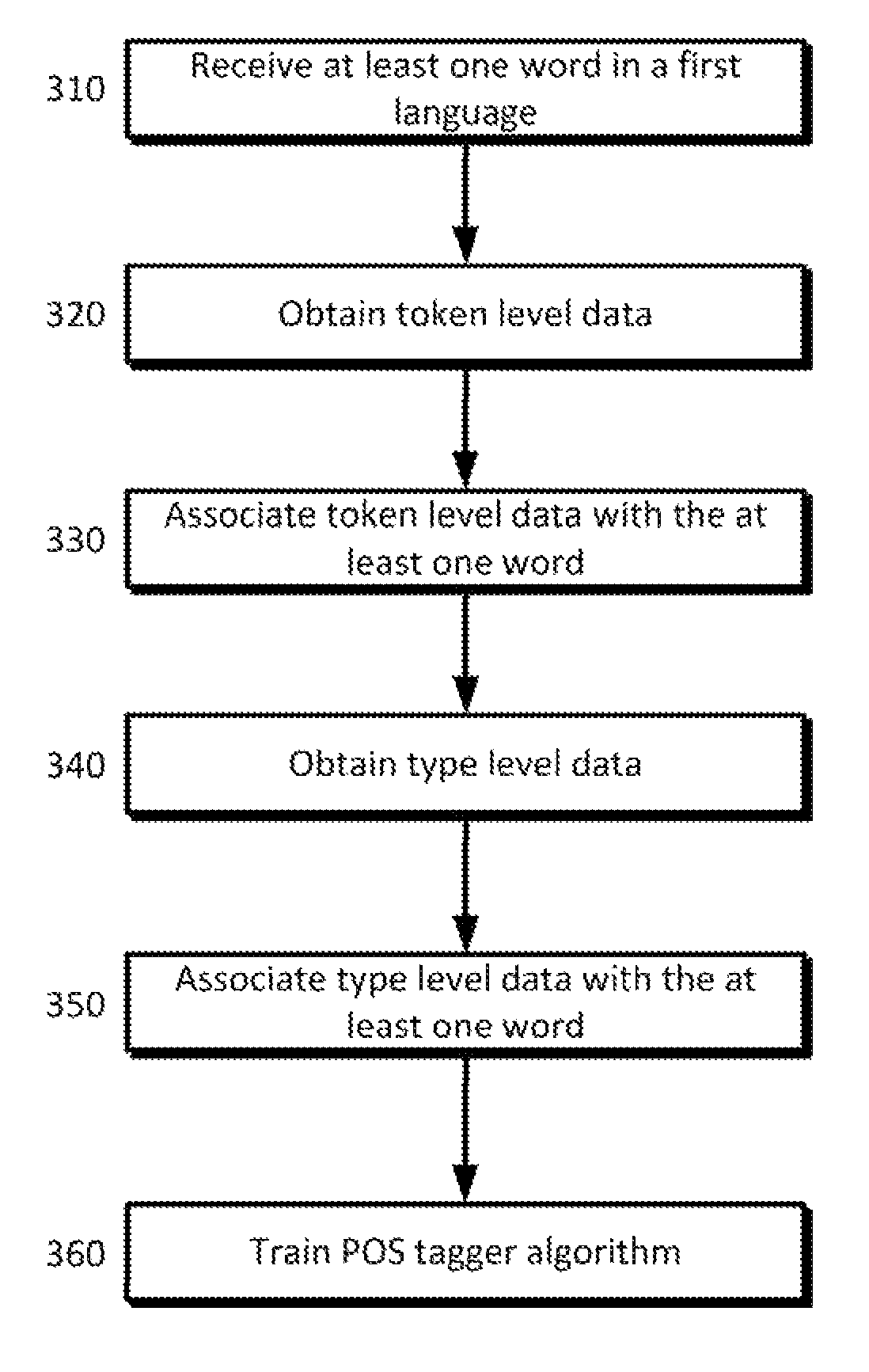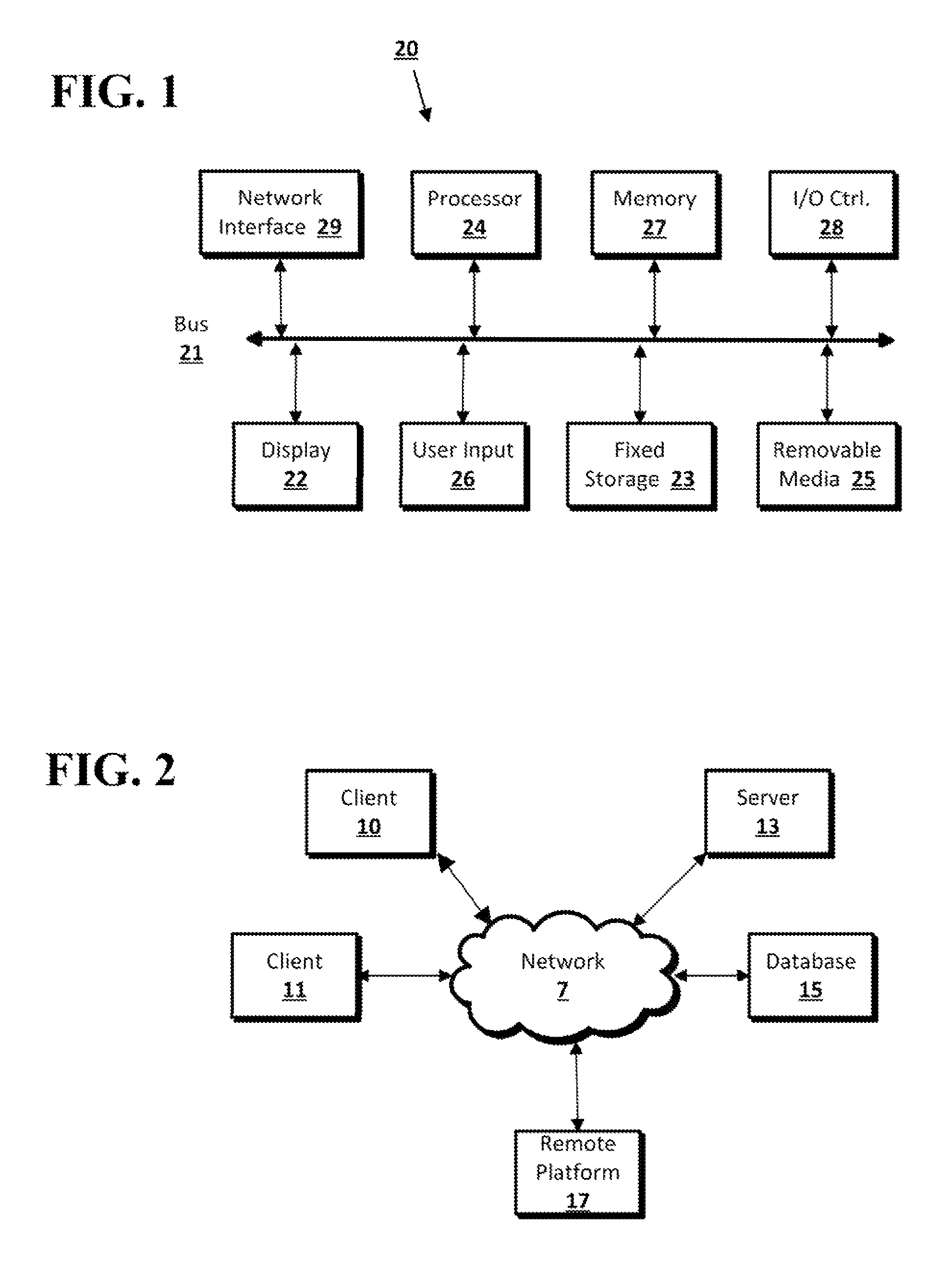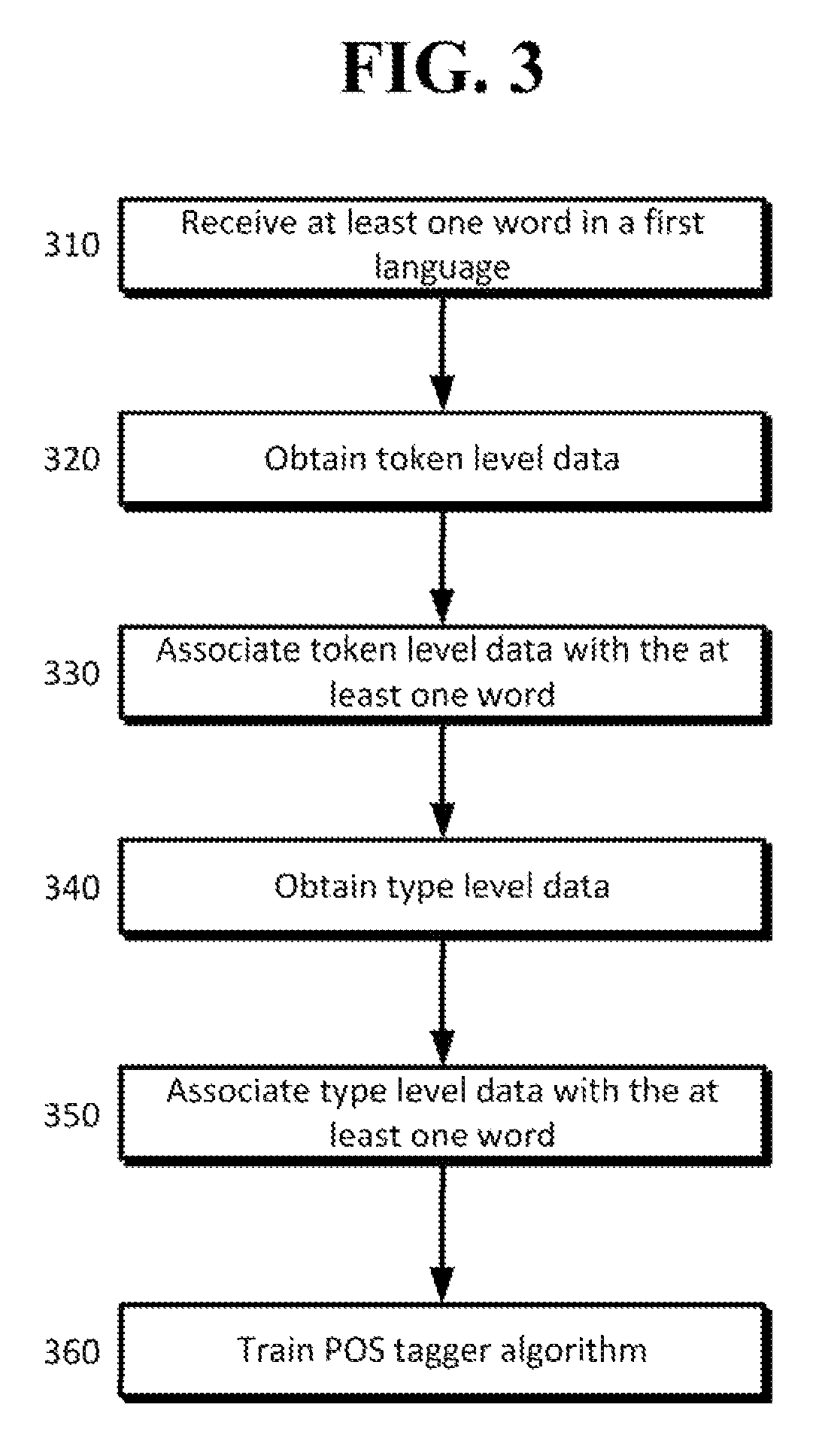Weakly supervised part-of-speech tagging with coupled token and type constraints
a technology of coupled tokens and type constraints, applied in semantic analysis, instruments, computing, etc., can solve the problems of expensive creation of resources required to train supervised taggers and the unlikely existence of them
- Summary
- Abstract
- Description
- Claims
- Application Information
AI Technical Summary
Benefits of technology
Problems solved by technology
Method used
Image
Examples
Embodiment Construction
[0018]Given a tag dictionary, even if it is incomplete, it is possible to train an accurate part-of-speech (“POS”) tagger. Such an approach may achieve excellent results. However, it typically is necessary to use tag dictionaries extracted directly from the underlying treebank data. Treebank data may refer to a text corpus in which each sentence has been parsed (i.e., annotated with syntactic structure). Such dictionaries may provide in-depth coverage of the test domain and also list all inflected forms of items included in the tag dictionary. Further, such resources often are difficult to obtain and, realistically, often may be unavailable for resource-poor languages.
[0019]In contrast, type-level tag dictionaries may be generated automatically by aggregating over projected token-level information extracted from bitext. To handle the noise in these automatic dictionaries, label propagation may be used on a similarity graph to smooth (and also expand) the label distributions. While t...
PUM
 Login to View More
Login to View More Abstract
Description
Claims
Application Information
 Login to View More
Login to View More - R&D
- Intellectual Property
- Life Sciences
- Materials
- Tech Scout
- Unparalleled Data Quality
- Higher Quality Content
- 60% Fewer Hallucinations
Browse by: Latest US Patents, China's latest patents, Technical Efficacy Thesaurus, Application Domain, Technology Topic, Popular Technical Reports.
© 2025 PatSnap. All rights reserved.Legal|Privacy policy|Modern Slavery Act Transparency Statement|Sitemap|About US| Contact US: help@patsnap.com



